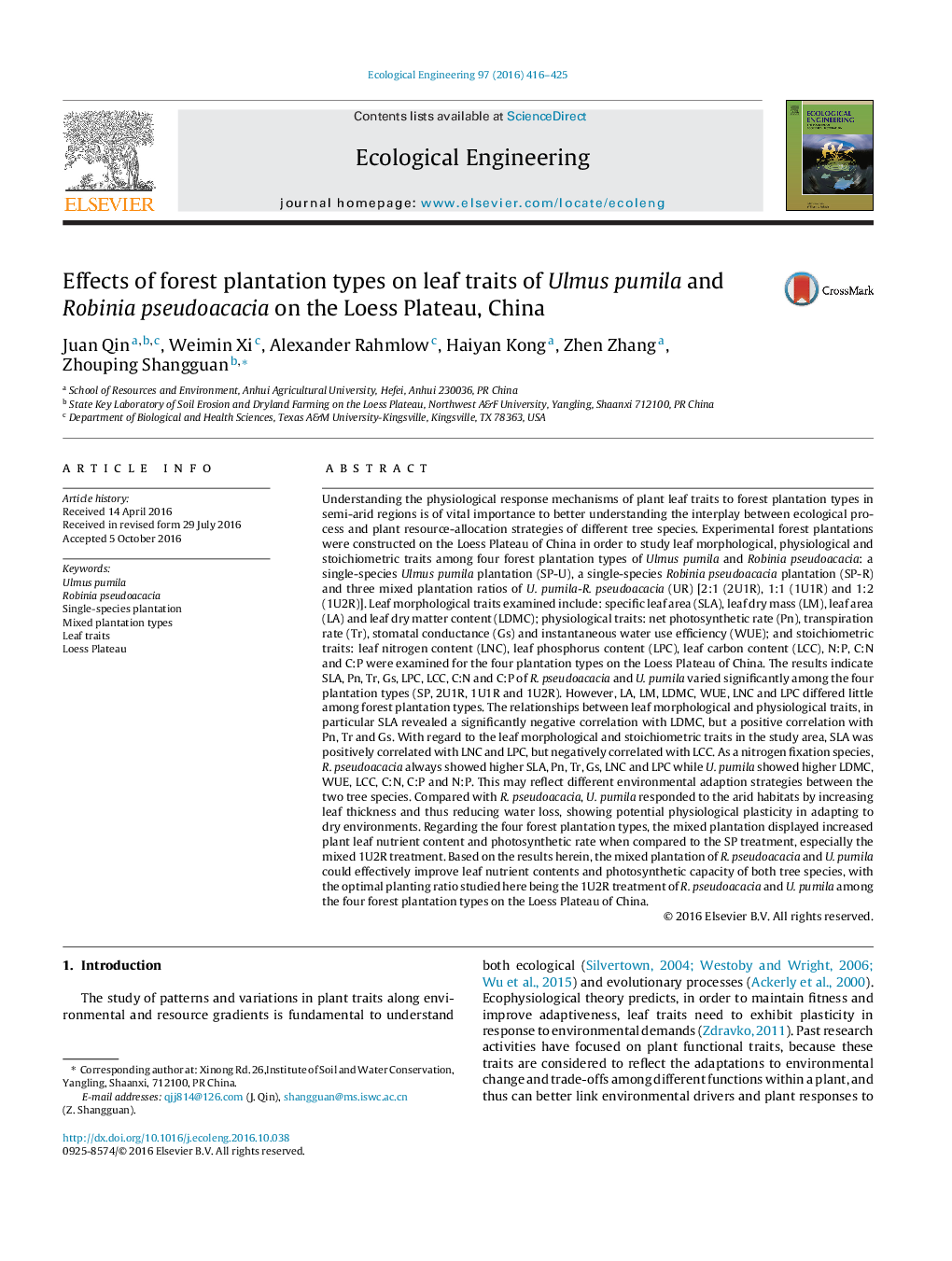| کد مقاله | کد نشریه | سال انتشار | مقاله انگلیسی | نسخه تمام متن |
|---|---|---|---|---|
| 4388402 | 1618002 | 2016 | 10 صفحه PDF | دانلود رایگان |
Understanding the physiological response mechanisms of plant leaf traits to forest plantation types in semi-arid regions is of vital importance to better understanding the interplay between ecological process and plant resource-allocation strategies of different tree species. Experimental forest plantations were constructed on the Loess Plateau of China in order to study leaf morphological, physiological and stoichiometric traits among four forest plantation types of Ulmus pumila and Robinia pseudoacacia: a single-species Ulmus pumila plantation (SP-U), a single-species Robinia pseudoacacia plantation (SP-R) and three mixed plantation ratios of U. pumila-R. pseudoacacia (UR) [2:1 (2U1R), 1:1 (1U1R) and 1:2 (1U2R)]. Leaf morphological traits examined include: specific leaf area (SLA), leaf dry mass (LM), leaf area (LA) and leaf dry matter content (LDMC); physiological traits: net photosynthetic rate (Pn), transpiration rate (Tr), stomatal conductance (Gs) and instantaneous water use efficiency (WUE); and stoichiometric traits: leaf nitrogen content (LNC), leaf phosphorus content (LPC), leaf carbon content (LCC), N:P, C:N and C:P were examined for the four plantation types on the Loess Plateau of China. The results indicate SLA, Pn, Tr, Gs, LPC, LCC, C:N and C:P of R. pseudoacacia and U. pumila varied significantly among the four plantation types (SP, 2U1R, 1U1R and 1U2R). However, LA, LM, LDMC, WUE, LNC and LPC differed little among forest plantation types. The relationships between leaf morphological and physiological traits, in particular SLA revealed a significantly negative correlation with LDMC, but a positive correlation with Pn, Tr and Gs. With regard to the leaf morphological and stoichiometric traits in the study area, SLA was positively correlated with LNC and LPC, but negatively correlated with LCC. As a nitrogen fixation species, R. pseudoacacia always showed higher SLA, Pn, Tr, Gs, LNC and LPC while U. pumila showed higher LDMC, WUE, LCC, C:N, C:P and N:P. This may reflect different environmental adaption strategies between the two tree species. Compared with R. pseudoacacia, U. pumila responded to the arid habitats by increasing leaf thickness and thus reducing water loss, showing potential physiological plasticity in adapting to dry environments. Regarding the four forest plantation types, the mixed plantation displayed increased plant leaf nutrient content and photosynthetic rate when compared to the SP treatment, especially the mixed 1U2R treatment. Based on the results herein, the mixed plantation of R. pseudoacacia and U. pumila could effectively improve leaf nutrient contents and photosynthetic capacity of both tree species, with the optimal planting ratio studied here being the 1U2R treatment of R. pseudoacacia and U. pumila among the four forest plantation types on the Loess Plateau of China.
Journal: Ecological Engineering - Volume 97, December 2016, Pages 416–425
